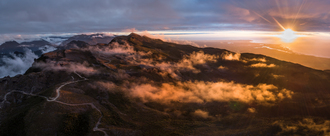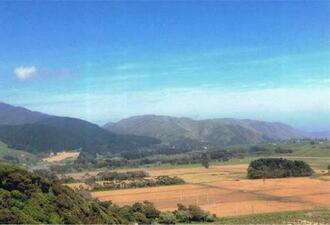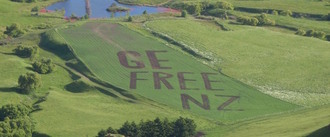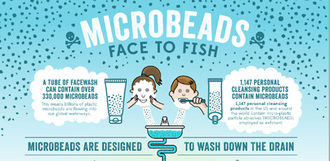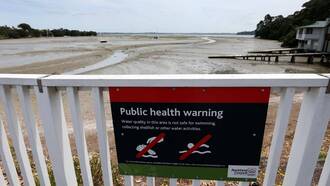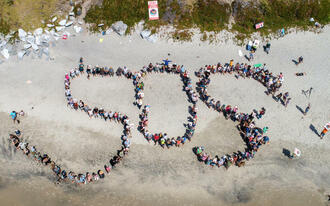-
Clean up toxic dump sites on horticultural landOld toxic waste dumps are all over New Zealand, including Auckland. Illegal tip sites in Auckland contain contaminants like pesticides, oil from machinery, refrigerants, household waste, old plant equipment etc which is leaking into estuaries then into rivers which flow into the Waitemata and other Auckland harbours. Horticultural sites especially, used and dumped stores of chemicals. Old dumps weren’t necessarily sealed properly and risk leaching into the environment, especially now with more extreme weather events. Auckland has old farms, wineries, and orchards that used toxic chemicals as pesticides and fungicides, in the decades before proper controls. It is important to manage these old dumps to protect our fresh and coastal waters and flora and fauna from contaminated waste leakage. We call on the council to review historic and current horticulture sites in the region, whether still operational or not, and investigate the sites for contaminated waste. This can be done and funded as part of the next Unitary Plan review. Where they find a toxic dump Auckland Council needs to take action. They could do this in a number of ways: 🌱 Urgent remediation of existing sites 🌱 Give the owners an ultimatum to clean it up, or the council/ government will appoint contractors to do the work, at their expense. 🌱 Ask people to report toxic dumps through an anonymous phone line 🌱 Offer a six month grace period for owners of land with private dumps to come forward without penalty There should be penalties for the owners of private dumps who do not disclose contaminated sites on their land. People who buy land in good faith and subsequently discover contamination, should be able to remove the contaminated waste when found, at the cost of the previous owners who passed the problem on, and those people be liable for penalties. Until old dumps are cleaned up then they will sit there doing damage to ecosystems. If they remain on site without people knowing they also risk human health. https://toiteora.govt.nz/public/contaminated-land/ https://www.thomasconsultants.co.nz/what-is-a-contaminated-site/20 of 100 SignaturesCreated by Mark Jensen
-
Public Submission: Save the Denniston Plateau from opencast coal miningThe Department of Conservation has begun its review and reclassification of the status of its “stewardship land”, starting on the West Coast. This includes the Denniston Plateau, which has already been partially destroyed by the mothballed Bathurst Resources’ Escarpment coal mine. The rest of the plateau is of high conservation value, and it, along with nearby Deep Creek, also contains some of the last unmined coking coal measures in the country, with mining permits held by BT Mining - a company set up by Bathurst Resources and Talley’s. Bathurst recently had to close a coal mine in Canterbury because it had breached so many consents. The coal mining industry wants these areas to be classified “Conservation Park”, which is the current recommendation, but in the words of mining lobby group Minerals West Coast: “Some reclassification categories - such as "conservation park", would still allow for mining under existing legislation.” Right now, the draft classifications for these areas are indeed only for "Conservation Park". The Denniston Plateau contains a unique sandstone plateau and rare wetlands, full of endangered and endemic creatures like our giant snail and the unique Avatar Moth, found nowhere else in the world. Also present are the great spotted kiwi and fern birds, and a rare skink found nowhere else, along with a giant snail. Experience in this part of the world shows us that any claims by a coal company that they will “rehabilitate” the land after mining are empty promises. These unique areas would be destroyed, the streams polluted, and the animals in them gone. The world is moving away from coal. We are in the midst of a climate emergency and we must protect our most precious areas both from the impacts of climate change - and from being dug up for coal that will only increase emissions at a time when we need to reduce them. ⏩ BELOW is the public submission to sign onto: Dear Panel members West Coast, The three areas we are concerned about all sit atop considerable coal measures, coal that if burned would contribute to climate change, at a time when governments around the world are attempting to reduce emissions to get the world onto a 1.5˚C warming pathway. We note the government’s Emission Reduction Plan (ERP) specifically refers to “working with nature” to help reduce emissions as part of solving our climate crisis: “Looking after these forests is one of the most important contributions Aotearoa can make to combating global climate change. We also have a significant opportunity to develop native forests that both act as long-term carbon sinks and support biodiversity…” ★ We therefore strongly recommend a much stronger protection regime for the following areas: 🌏 1. Kaw_10 - Waimangaroa - Granity This area contains Deep Creek, a highly biodiverse area, with coal measures under the land. Given the main habitat of the Powelliphanta augustus was obliterated by the Stockton Mine, and rehabilitation efforts have failed, and the majority of the remainder of this species are still living in fridges, it is absolutely critical to preserve, in perpetuity, this last remaining habitat of this critically endangered species. The very nature of the DOC description: “high ecological values” and “overwhelmingly natural and largely intact” brings into question its lowly recommended classification of Conservation Park. A scientific reserve would preserve this area in perpetuity, especially as it would preclude the area from being stripped bare in an opencast coal mine. We therefore recommend that this be classified as an ecological area (under Part 4, S21 of the Conservation Act) with a scientific reserve on the remainder of the Stockton Plateau (sandstone pavement) including Upper Deep Creek/Whirlwind Creek (under Part 3, S21 of the Reserves Act) 🌏 2. Kaw_17-Mount Rochfort, Old Denniston School Site Again, we consider the recommendation of “Conservation Park” is in contradiction to the high biodiversity values of the area. The great spotted kiwi and weka are both found here, along with the Avatar Moth, a species unknown anywhere else in the world, and only identified in 2012. It is also home to the Denniston skink, another species found nowhere else, and the giant snail Powelliphanta Patrickensis We consider this biodiverse area must be protected, not least from being stripped bare by a coal mine, which would likely render at least some of these species extinct. The Denniston plateau contains valuable wetland peatland areas found nowhere else. Not only should they be protected from coal mining, but we note the Government’s Emissions Reduction Plan specifically points to a strategy of wetland and biodiversity protection as part of our climate strategy and to protect them as valuable carbon sinks. We recommend that the Denniston plateau component be declared a Scientific Reserve and that the remainder be classified as an ecological area. We also recommend that the Old Denniston School area be declared as an Historic Reserve (under Part 3, S18 Reserves Act) 🌏 3. KAW_26 - Ballarat Again, we find it odd the recommended classification is only "Conservation Park", given the “high landscape and ecological value” supporting “rare and distinct species.” We recommend that Conservation Area Ballarat be classified as an ecological area. Lastly, and importantly, we also make a wider recommendation that the Government changes our legislation covering these areas: the Reserves Act, the Conservation Act, and the National Parks Act, so they all honour and respect Te Tiriti O Waitangi - the Treaty of Waitangi. Such changes should reflect the rights of Māori to be able to access these areas for cultural purposes such as mahinga kai and medicinal plants for rongoā - without having to seek permission. Ngā mihi https://www.youtube.com/watch?v=ByRGSD_ijh42,234 of 3,000 SignaturesCreated by Coal Action Network Aotearoa
-
A Moratorium on Fishing of Long Finned Eel (Tuna) Needs to Be Implemented Immediately"The greatness of a nation and its moral progress can be judged by the way its animals are treated." - Mahatma Gandhi “Any threat to the eels are a threat to the identity and mana of the iwi and hapū who have a responsibility to protect them… It is outrageous that people are still catching them for profit.” - Sir Pita Sharples, 2013 "The Government must suspend the commercial catch of New Zealand's longfin eel, and accept the conclusion by Parliament's environment watchdog that the eel is on a path to extinction" - Green Party spokesperson for conservation and oceans & fisheries., Eugenie Sage, 2016 https://www.greens.org.nz/govt-must-act-longfin-eels-disappear "Killing a kererū - which is classified as "Near Threatened" - is punishable with a $100,000 fine, and/or up to two years in prison. Yet with the long finned eel - which is classified as "Endangered" – not only can recreational fishers legally take up to 6 day, but killing them is rewarded with somewhere between $10 and $20 per eel on the export market" - Charlie Mitchell, Environment Correspondent, Stuff, 2019 "https://www.stuff.co.nz/environment/113450351/managed-to-extinction-are-we-at-risk-of-losing-our-creature-of-mystery "The concern among scientists is that freshwater eel numbers are declining to the point where populations will not possess the critical mass necessary to carry on migration and reproduction. In the 19th century, the North American population of passenger pigeons was estimated to be over six billion, representing 25 percent or more of the total avian biomass of the continent. Even though millions of passenger pigeons were being killed every year, it seemed the resource could never be exhausted. The species went extinct in 1914" -James Prosek, award winning author, artist and filmmaker, 2010 https://e360.yale.edu/features/a_steady_steep_decline_for_the_lowly_uncharismatic_eel "Tuna whakaheke deaths are disastrous for the future" - Hori Kingi, Ngā Kaitiāki o Ngā Wāimāori https://www.nzherald.co.nz/northern-advocate/news/eels-minced-by-hikurangi-swamp-pumps-dumped-at-council-offices/HIFOC2IWYHNGTM7ZV6E7MXFX4Y/ The long-finned eel (tuna) is endemic to New Zealand. It is an ancient species with a profound connection to our land and its people. It is an iconic and mythical species with an important place in the history and folklore of Māori - with a special traditional role as a spiritual protector of the land, nature and people - as much as the kiwi, kererū, tuatara, Hector's dolphin and the like. It is categorized by the Department of Conservation as "Declining - At Risk" and yet we are exporting as much as 100 tonnes of them per year as well as allowing recreational fishermen to fish them at will. The tuna is one of the largest eel species in the world. It was once very common in our waters; today, it is endangered, yet we continue to plunder it. The government has done little meaningful to protect the species, despite prior petitions being presented to them (in 2013). When in opposition, Labour and the Greens supported the proposal of this petition (a moratorium on commercial harvesting) yet when they were elected, little changed. The tuna is a noble, beautiful, mighty species of creature that deserves a place in the heart of every citizen, just as the kiwi and tuatara. They bring happiness to people when they can see and interact with them in the wild. At this rate, reserves like Ngā Manu will be the only place to see them, and eventually the species will be gone forever - exactly like what happened (almost) to the American bison and the passenger pigeon, both species which were annihilated from billions of individuals to extinction or near extinction by thoughtless greed in the space of a matter of decades. Surely we are better than that - I think most Kiwis would assume that we are, but our history, and current policies and attitudes with respect to this issue, puts those important values in serious question. The campaign acknowledges the kaitiaki status of mana whenua/local iwi to best look after tuna. Note that a member of the community representing Eel Activists Wairarapa has made a submission to parliament petitioning for the species of tuna to be granted absolute protection, in light of its endangered status. Please also consider signing this petition here https://www.parliament.nz/en/pb/petitions/document/PET_113510/petition-of-david-famularo-protect-the-longfin-eeltuna Join the eel conservation Facebook group here https://www.facebook.com/groups/472729636842389/ I believe placing the tuna on the protected species list, like the kiwi, kea, native lizards, native dolphins, and so on, is ultimately the most desirable outcome, but the most urgent step is to place at least a temporary halt on its utterly unsustainable commercial exploitation. https://e360.yale.edu/features/a_steady_steep_decline_for_the_lowly_uncharismatic_eel https://www.stuff.co.nz/environment/128521642/threatened-eels-still-being-harvested-for-food-renewing-call-for-commercial-fishing-ban https://www.stuff.co.nz/environment/113954064/the-dams-the-science-and-the-tiny-industry-clinging-to-life?rm=a https://www.stuff.co.nz/environment/82056650/pressure-to-ban-fishing-of-longfin-eels-rises-as-industry-faces-upheaval?rm=ahttps://www.stuff.co.nz/taranaki-daily-news/69946047/eels-just-as-worthy-of-protections-as-kereru https://www.longfineel.co.nz/wp-content/uploads/2011/06/Tuna-Kuwharuwharu-Longfin-Eel.pdf https://eel-activists-wairarapa.blogspot.com/ https://www.pce.parliament.nz/publications/on-a-pathway-to-extinction-an-investigation-into-the-status-and-management-of-the-longfin-eel http://www.longfineel.co.nz/extinction-crisis/ https://www.visitzealandia.com/Events/ArtMID/2271/ArticleID/272/Tunaeel-release-to-keep-population-thriving http://www.longfineel.co.nz/conservation/ https://www.doc.govt.nz/nature/native-animals/freshwater-fish/eels/596 of 600 SignaturesCreated by Liam McMahon
-
Moratorium on helipad consents for Aotea / Great BarrierThe Aotea community is greatly concerned about the recent increase in helipad applications for Aotea, and the fact the Hauraki Gulf Islands District Plan “specifically envisions helipad activity” and provides a planning pathway for new consents. Our island is a precious ecological sanctuary; people live and visit here to experience a different pace and way of life. The potential proliferation of helicopters runs counter to this, and to the wairua of Aotea. Whilst we fully support and value the vital medical helicopter flights that service the island, we take issue with private, non-essential helicopter flights. They are an intrusive source of noise and pollution and are driving division in our normally tight-knit community. We call for a halt to all consent approvals, while a longer-term solution to this problem is found; one which protects our island’s peace, ecology and world-leading night skies, along with the climate.419 of 500 SignaturesCreated by Scotty Witherow
-
Save the Paturoa KauriAt a time when our forest is losing Kauri trees to Kauri dieback disease, we need to do all we can to save the healthy trees to protect this endemic species. I am not anti-development, however, the developer could move the intended building and protect these trees. The RMA was never designed to allow developers to be able to destroy trees that have significant ecological value. The RMA legislation has loopholes that will destroy our forests if change does not happen.28,006 of 30,000 SignaturesCreated by Toko

-
Stop the aerial spraying of harmful herbicides in QE ParkThe World Health Organisation's research arm, the IARC, has declared glyphosate a probable carcinogen. Glyphosate has been linked to tumours in mice and rats — and there is also what the IARC classifies as ‘mechanistic evidence’, such as DNA damage to human cells from exposure to glyphosate. The poison is being dropped by helicopters, the boundary of which is the newly built cycle path, only a few meters from residents properties. Poison was dropped early on labour day, breathed in by residents opening their front doors, as well as onto people in the park. Residents, growers, pony clubs and concerned human beings are worried for our children, our food, our water, our birds and animals.1,098 of 2,000 SignaturesCreated by Peter Brooking

-
Stand by your pledge to protect GM Free RegionsThe current Minister has made quite clear that he will use those new powers to quash regional GM free food-producing zones, even though they are backed by communities, using legitimate planning processes. Auckland, Far North, Whangarei and Hastings councils' have all exercised their current rights under the RMA to create GM free food-producing zones. The zones are community-driven by tangata whenua and pākehā working together to secure these protections for our whenua, our kai and our people. As you know, they cover what is grown on the land and farmed. They are not about medicines or cancer vaccines, which will continue to be regulated exclusively by national health authorities. Other regional initiatives that protect communities and local environments would also be under the gun – particularly protections around fracking and other mining activities. Do not lend your names or that of the Māori Party to this bid to undermine the rights of our communities. These powers should not be the law of our lands. You can protect our ability to shape the futures we want for our people and land. Stand by us; defend local democracy. Do not support 360D or 43A(3A), in any form.1,933 of 2,000 SignaturesCreated by Soil & Health Association

-
Stop Hot Foot!Hot Foot and other polybutene based bird repellents are a cruel and inhumane method of pest control. It is a sticky glue like substance which burns on skin contact and can trap birds and small animals(1), literally gluing them to buildings! (2) It does not discriminate between native and non-native birds and the injuries that birds sustain may require them to be euthanised (3). Mitre 10 and the manufacturer of Hot Foot (Hot Foot International) claim that it does not harm birds but that is hard to believe when the product carries so many harsh health warnings for humans. For eye contact, you are supposed to flush with water for 20 minutes. For skin contact you are supposed to do the same and sponge the skin gently so the skin doesn't come off. If it's swallowed, it can burn the mouth, throat and stomach lining and they can't even pump your stomach so you're out of luck. (4) All of these things could happen to a bird who encounters the gel and tries to remove it by preening. Pest control does not have to be cruel. There are many products available on the market, even at Mitre 10, which do not cause any harm to the target animals. Spikes, nets, flash tapes, predator decoys and even similar non-toxic bio repellent gels are very effective and also humane. Hot foot is a barbaric product that has no place on Mitre 10's shelves--tell Mitre 10 to stop carrying Hot Foot today! --References-- 1. Hot Foot's own label details the risks of using the product: https://www.hotfoot.com/labels/gel-label.pdf 2. A sad story from Waikato in 2009 shows how a flock of native Welcome Swallows (Warou) were trapped against a pipe and unable to free themselves: http://www.stuff.co.nz/waikato-times/news/2774765/Bird-error-hard-to-swallow 3. A 2011 story from Nelson shows another incident where the majority of a flock of Welcome Swallows needed the be euthanised. Note the quote from Senior SPCA inspector Craig Crowley who says "I have never seen anything as horrible in pest control. It is unacceptable in any circumstances." http://www.stuff.co.nz/the-press/news/5256404/Distressing-sticky-end-for-trapped-swallows 4. This page details medical advice for emergency medical treatment. http://toxnet.nlm.nih.gov/cgi-bin/sis/search/a?dbs+hsdb:@term+@DOCNO+515886 of 100 SignaturesCreated by Ellen Ozarka

-
Save Graham's BushIndividuals, like Graham, who have been protecting the bush for years (and were paid subsidies by city councils to do this) are now finding out that their land is to be forceably taken from them, and their precious bush destroyed. The proposed route will bisect the water catchment that feeds Totara Park. There is already evidence that existing roading has damaged gullies of native bush in the area - this proposal would have a much greater negative impact. Grahams Bush is one of many on the proposed highway route. It has a number of significant trees and it is a site of ecological importance. Graham unfortunately died trying to save this bush last year during this fight. We want to honour his legacy and are are tired of Auckland Transport saying this is the 'cheapest' route. We say it is the most expensive - ecologically expensive and ridiculously planned in a way that makes no sense in the 21st century. Sign our petition to send a message that says NO to the proposed route and YES to being heard. If you want to read some ideas on alternatives please visit the site of GenZero or Auckland Transport Bloggers - they have suggested some excellent alternatives to fix Auckland's Transport Problems and for a lot less cost! For example: http://www.scoop.co.nz/stories/PO1503/S00036/launch-of-essential-transport-budget-generation-zero.htm7,223 of 8,000 SignaturesCreated by Eve Osbourne

-
Ban microbeads in New ZealandMicrobeads are small pieces of plastic that are found mainly in beauty products, facial scrubs and toothpaste. They have been proven to have a devastating impact on marine life and that they filter through the food chain and have an impact on human diets as well. They have even been found in sea salt. There is no practical way to clean them once they are in the ocean. Article 23 of the Waste Minimisation Act 2008 states that regulations may be put in place to prohibit the manufacture or sale of products that contain specified materials. We therefore call on Hon. Dr. Nick Smith to apply this article to plastic microbeads, including 'biodegradable' plastic microbeads and other similar products that will not break down in our oceans. https://www.beatthemicrobead.org/ Credit to 5Gyres for the picture.8,358 of 9,000 SignaturesCreated by Jake, Naomi, Briar, Sariya and Kaya

-
Stop the Poo-llution of Auckland’s urban waterways, beaches and coastal environmentThere is poo on our beaches! Auckland's waterways and beaches are seriously polluted by stormwater regularly contaminated by sewage, trade waste, heavy metals, toxins, chemicals, and oils thanks to years of inaction by the council, and fear of rate rises. We need urgent action so that New Zealanders can enjoy our urban waterways and beaches without fear of sickness or injury or swimming with poo and we protect our freshwater and marine organisms from pollution and destruction. We need action now, not in 10 years time. Give us back our beaches, estuaries, lagoons streams and rivers! This campaign is about raising peoples’ awareness of what is going on under our feet with inadequate infrastructure to cope with climate change and the massive intensification of Tamaki Makaurau, the Auckland region. So far there is almost a sole emphasis on rural areas and the problems intensive farming is causing to our rural waterways and lakes. This is really important. but so is the disgraceful state of many urban waterways and beaches where people are now regularly being told they cannot swim. There is a solution right now on the table the Council is avoiding - the government proposal for ‘three waters’ reform is perfect for Auckland specifically. The three waters are storm water, waste water, and drinking water. Through the proposal, Auckland can take advantage of Government funding to catch up on the needed upgrades and infrastructure spends. It will take politics out of the decisions and prioritise the health of the harbour and the people. Ngāti Whātua ki Orākei Iwi deputy chair, Ngārimu Blair and Council Mayor Phil Goff both sat on the working group for Three Waters reforms. Unfortunately Auckland’s Environment watchdogs do not - we are excluded. If there are concerns specific to Auckland region then let’s engage to adapt it for our region and make it work. We demand action now, not in 10, or 20 years time. Let’s revive our beaches, estuaries, lagoons, streams and rivers! By acting now we will revive the health of our freshwater and marine life, and the people’s health for generations to come. No more sewage or contaminated stormwater in our backyards and beach environments. We need to work together to clean this up - Māori, Pakeha, diverse communities, churches, community organisations, environmental groups, businesses, political parties, schools, and individuals. Kia kaha! Kia maia! Awhina mai! The Detail: How safe are Auckland's beaches from pollution? https://www.stuff.co.nz/national/the-detail/300217833/the-detail-how-safe-are-aucklands-beaches-from-pollution Nearly 40 Auckland beaches overwhelmed by faecal contamination, deemed unsafe for swimming https://www.newshub.co.nz/home/new-zealand/2021/04/nearly-40-auckland-beaches-overwhelmed-by-faecal-contamination-deemed-unsafe-for-swimming.html Government's Three Waters working group to include mayors Goff, Barry, Reese and Dalziel https://www.stuff.co.nz/national/politics/126951378/governments-three-waters-working-group-to-include-mayors-goff-barry-reese-and-dalziel720 of 800 SignaturesCreated by John McCaffery

-
Mangawhai Pakiri SOSPakiri & Mangawhai Beaches, two hours north of Auckland are natural treasures. People come to enjoy their glistening white sands, miraculous dunes, precious ecosystems and the rare species that make it their home. It is a taonga for generations to come. Yet for decades this area has been mined for its white sand. It’s the site of the largest single nearshore sand mining activity in the developed world. This sand extraction is causing erosion, threatening the sand-spit, destroying shellfish beds, stealing safe nesting spots from endangered birds and ruining surf breaks. It’s home to the Fairy Tern who nest in the sand dunes - only 40 are left now before they become extinct. Sand miner McCallum Brothers in seeking 3 consents to mine vast quantities of sand - 9 million cubic meters over a period of 35 years! To imagine how much this is, take a 1m cubed box of sand, line up 9 million of them - it’s the length of 6x New Zealand. We urgently need your support, if enough of us raise our voices we can send a powerful message to council that we want sand mining to stop. No other developed country allows nearshore sand mining – help to stop this madness and ensure guardianship of this beautiful coastline. Please: 1. Sign and share this petition to say no to sand mining of Mangawhai-Pakiri Embayment now! THANKS FOR YOUR SUPPORT Save our Sands (Mangawhai Harbour Restoration Society, Friends of Pakiri Beach, Te Whanau o Pakiri, Tangata Whenua, locals and concerned New Zealanders) are taking a stand and we need your help! This petition is in support of, and in partnership with the Friends of Pakiri Beach who are also collecting signatures and submissions here: https://our.actionstation.org.nz/petitions/save-pakiri-beach-from-sand-mining References: Pakiri locals fight plans to take their sand for Auckland beaches, RNZ, May 2021 https://www.rnz.co.nz/news/in-depth/441849/pakiri-locals-fight-plans-to-take-their-sand-for-auckland-beaches https://www.nzherald.co.nz/northern-advocate/news/ecologically-significant-mangawhai-sandspit-at-risk-from-sand-mining-northland-regional-council/BZCWODYKYBSOM2S6GOFPAHIPZU/9,935 of 10,000 SignaturesCreated by Save Our Sands


